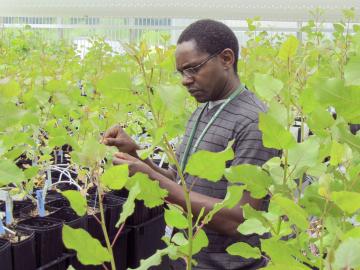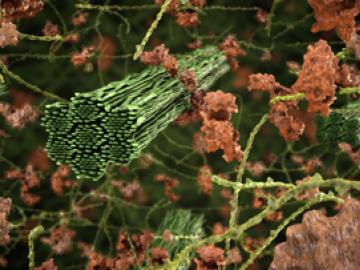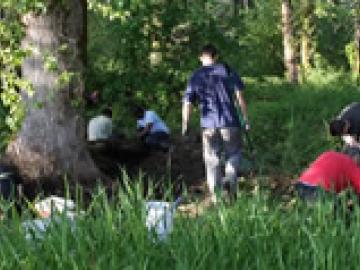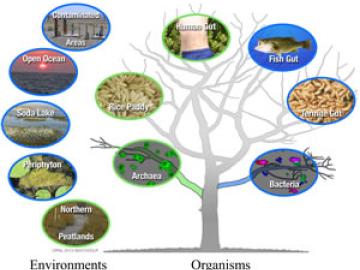Filter News
Area of Research
- (-) Biological Systems (6)
- (-) Transportation Systems (3)
- Advanced Manufacturing (1)
- Clean Energy (32)
- Climate and Environmental Systems (1)
- Computational Biology (2)
- Computer Science (1)
- Energy Sciences (2)
- Fossil Energy (1)
- Materials (23)
- Neutron Science (8)
- Nuclear Science and Technology (3)
- Supercomputing (14)
Media Contacts

GreenWood Resources has licensed an Oak Ridge National Laboratory technology based on the discovery of a gene in poplar (Populus trichocarpa) that makes it easier to convert poplar trees into biofuels. GreenWood, a global timberland investment and asset m...

A 20-kilowatt wireless charging system demonstrated at the Department of Energy’s Oak Ridge National Laboratory has achieved 90 percent efficiency at three times the rate of the plug-in systems commonly used for electric vehicles today. This ability can help acc...

Robert Wagner of the Department of Energy's Oak Ridge National Laboratory has been chosen to receive the 2014 International Leadership Citation from the Society of Automotive Engineers.

The associate laboratory director for Energy and Environmental Sciences (EES) at the Department of Energy’s Oak Ridge National Laboratory and two University of Tennessee-ORNL Governor’s Chair researchers are among the newly elected fellows of the American Associa...

Oak Ridge National Laboratory engineers are trying to improve efficiency and performance in tiny engines in remote-controlled airplanes that have applications for aerial military surveillance.

ORNL study uses neutron scattering, supercomputing to demystify forces at play in biofuel production
Researchers studying more effective ways to convert woody plant matter into biofuels at the Department of Energy's Oak Ridge National Laboratory have identified fundamental forces that change plant structures during pretreatment processes used in the

The ability to make plants grow stronger and more quickly is a key goal in the effort to develop better biofuels and better understand plant efficiency.

Microbes that live in rice paddies, northern peat bogs and other previously unexpected environments are among the bacteria that can generate highly toxic methylmercury, researchers at Oak Ridge National Laboratory and the Smithsonian Environmental Research Center have learned.

More forms of mercury can be converted to deadly methylmercury than previously thought, according to a study published Sunday in Nature Geoscience.




